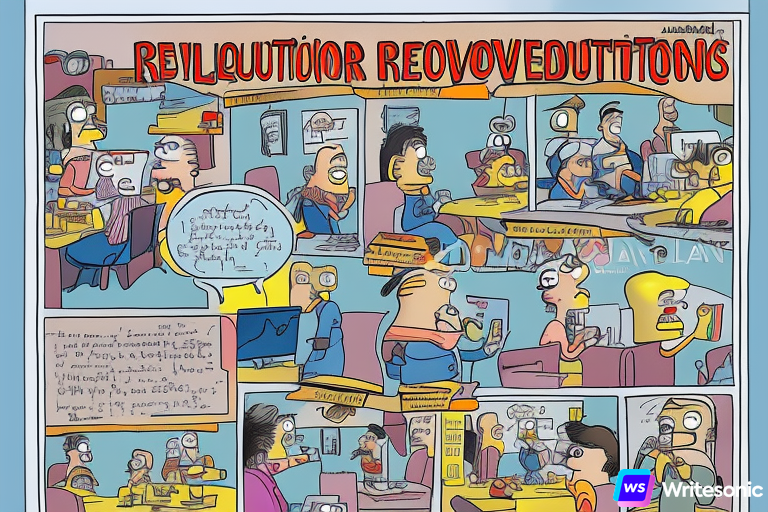Steps Needed For Putting Social Media For Authentic Learning Into Action.
In this post, we will explore several types of technology, including social media used for learning, blogs, and wikis. We need to remember that although blogs and wikis, in some cases, predated social media, they are considered a part of social media.
When integrating social media to support authentic learning in the classroom or learning situation, we must first define what authentic learning experiences are. Authentic learning experiences are created around real-life, genuine purposes. They engage students in critical thinking and twenty-first-century learning, teach important skills such as research and collaboration, and improve student learning. Authentic learning can rely on technology to develop typical scenarios that learners encounter in real-world settings. Online authentic learning experiences often integrate asynchronous and synchronous communication and social media for teamwork, including collaborative online investigations, resource sharing and knowledge construction. Social media tools, such as blogs and wikis, can help learners find a broader community where they can share information and resources.
Many teachers are also using social media with their students because of the unique ways it can help to prepare them to participate in the workforce as adults. Lessons of this sort may require students to construct online profiles that are intended to accomplish specific results, such as obtaining a job. This can be an important way to convey to students how important it is to think about how one comes across in online communication. People are familiar with the idea that “you never get a second chance to make a first impression,” but online interactions are new enough in social relations that many people have yet to realize that the content they post online—photographs, status updates, or comments on political issues—will almost certainly stay online in some form permanently, despite their best efforts to remove it later (Budra & Burnham, 2012). In as much as part of teachers’ role, in addition to content instruction in core subjects, is to prepare students for the world of adulthood, it is crucial to include in students’ lessons some time devoted to online reputation management (Junco, 2014). This may involve building a resume using a site such as LinkedIn, reviewing one’s online history to spot issues that could potentially be a source of concern in the future, and learning the niceties of online communication (where one must keep in mind that sarcasm and other means of communication are often not perceptible in the absence of nonverbal cues). (Zimmer, 2015)
In part because of greater participation rates among young people, social media’s effects upon the education system have been especially noteworthy. In recent years, educators have begun to embrace various social media not only for their personal use, but also as a tool to connect with their students and to help their students collaborate with one another. Social media is also helping educators find new ways for students to conduct research, because the information that people share in online communities represents a largely untapped source of information.
The use of social media for authentic learning experiences is opening up new possibilities to educators and students, every day. However, when social media is used to systematically harass someone, often in the presence of other members of an online community, the teacher or school must deal with those consequences. There have been many cases of students cyberbullying one another, sometimes with tragic consequences. This trend has caused schools to develop programs to educate youth about the fact that bullying is still bullying, even if it happens online, and that it is behavior that will not be tolerated.
Suggested Reading
Bartow, S. M. (2014). Teaching with social media: Disrupting present day public education. Educational Studies: Journal of the American Educational Studies Association, 50(1), 36-64. Retrieved March 22, 2015 from EBSCO Online Database Education Research Complete. http://search.ebscohost.com.ezproxy.snhu.edu/login.aspx?direct=true&db=ehh&AN=94358434&site=ehost-live
Bryant, P., Coombs, A., & Pazio, M. (2014). Are we having fun yet? Institutional resistance and the introduction of play and experimentation into learning innovation through social media. Journal of Interactive Media in Education, 2, 32–39. Retrieved March 22, 2015 from EBSCO Online Database Education Research Complete. http://search.ebscohost.com.ezproxy.snhu.edu/login.aspx?direct=true&db=ehh&AN=100168239&site=ehost-live
Ciampa, M., Thrasher, E. H., & Revel, M. A. (2016). Social media use in academics: Undergraduate perceptions and practices. Journal of Educational Technology, 12(4), 10–19. Retrieved December 27, 2016, from EBSCO online database Education Source. http://search.ebscohost.com.ezproxy.snhu.edu/login.aspx?direct=true&db=eue&AN=115096648&site=ehost-live&scope=site
Gikas, J., & Grant, M. M. (2013). Mobile computing devices in higher education: Student perspectives on learning with cell phones, smartphones & social media. The Internet and Higher Education, 1918–26. Retrieved March 22, 2015 from EBSCO Online Database Academic Search Complete. http://search.ebscohost.com.ezproxy.snhu.edu/login.aspx?direct=true&db=a9h&AN=90637482&site=ehost-live
REFERENCES
Budra, P. V., & Burnham, C. (2012). From text to txting: New media in the classroom. Bloomington, IN: Indiana University Press.
Junco, R. (2014). Engaging students through social media: Evidence based practices for use in student affairs. San Francisco, CA : Jossey-Bass.
Zimmer, S. (2015). Social Media as a Teaching and Learning Tool. Research Starters: Education,


